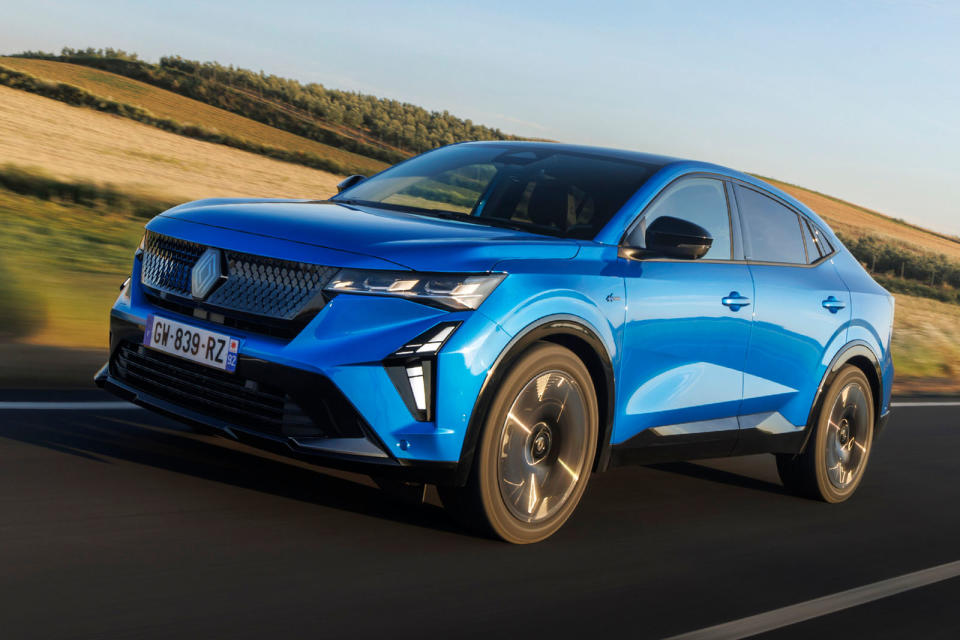Renault Rafale

The phrase ‘flagship model’ doesn’t associate quite so readily with Renault as it does, say, BMW, Mercedes-Benz or even Volkswagen. Indeed, you could argue that no Renault model has been quite so overtly positioned as such since the dearly departed Laguna, or even the Safrane. To say less of the Avantime and Vel Satis.
So there’s immediately a slight psychological hurdle to clear in positioning the new Renault Rafale, a chunky but handsome coupé-SUV. What role does it play for Renault? And who is it for? These are especially poignant questions given the company’s simultaneous renewed focus on the affordable small car market with the launch of compact models including the Clio, Captur 5, 4 and Twingo. Where does a large, quasi-luxury SUV fit into this picture?
The Rafale is, in case you’ve (understandably) lost count, Renault’s seventh SUV, effectively slotting into the cigarette-paper-sized gap between the technically related Austral and seven-seat Espace, with which it shares its fundamental chassis. While those SUVs, though, are practically minded family cars through and through, this one is aimed much more obviously at the executive market, with a more overt premium aura and more heavily accentuated dynamic credentials.
Renault has lofty ambitions to upset the German stalwarts in this segment, with the likes of the Audi Q3 and BMW X2 mentioned as benchmarks, and bosses are confident that while the Rafale opens up a new segment for Renault and takes the brand into new price territory, there is substantial market demand for such a car. The D-segment market, the French firm notes, is the fastest-growing in Europe, and sportback SUVs in that sector are particularly in vogue. Conversations about re-entering this sphere with a lower-slung saloon, fastback or estate, we’re told, didn't last very long.
The Rafale is available from launch with Renault’s unusual (and almost impenetrably complex) E-Tech Full Hybrid powertrain, combining a 1.2-litre three-cylinder petrol engine with a with a pair of electric motors – one to provide supplementary traction power and the other serving as an integrated starter-generator – for 197bhp and 0-62mph in 8.9sec. A small 2kW battery under the driver’s seat, meanwhile, allows for engine-off driving over short distances.
A four-wheel-drive, 296bhp plug-in hybrid, riding on a chassis fettled by Alpine and equipped with a 22kW battery for 62 miles of electric-only range, will land later this year, starting at £48,140 as an alternative to the likes of the Mercedes GLC 300e and Volvo XC60 PHEV.
In keeping with Renault’s commitment to offering as simple a line-up as possible, there are just three trims available from launch: Techno, Techno Esprit Alpine and Iconic. They're priced from £38,195, £42,195 and £44,695 respectively and available in a choice of five colours, with one set of wheels and one upholstery configuration. Standard kit is generous at all levels, but mixing and matching of options will not be tolerated. You want the 360deg camera? It’s Esprit Alpine trim or bust.
]]>

 Yahoo Autos
Yahoo Autos 